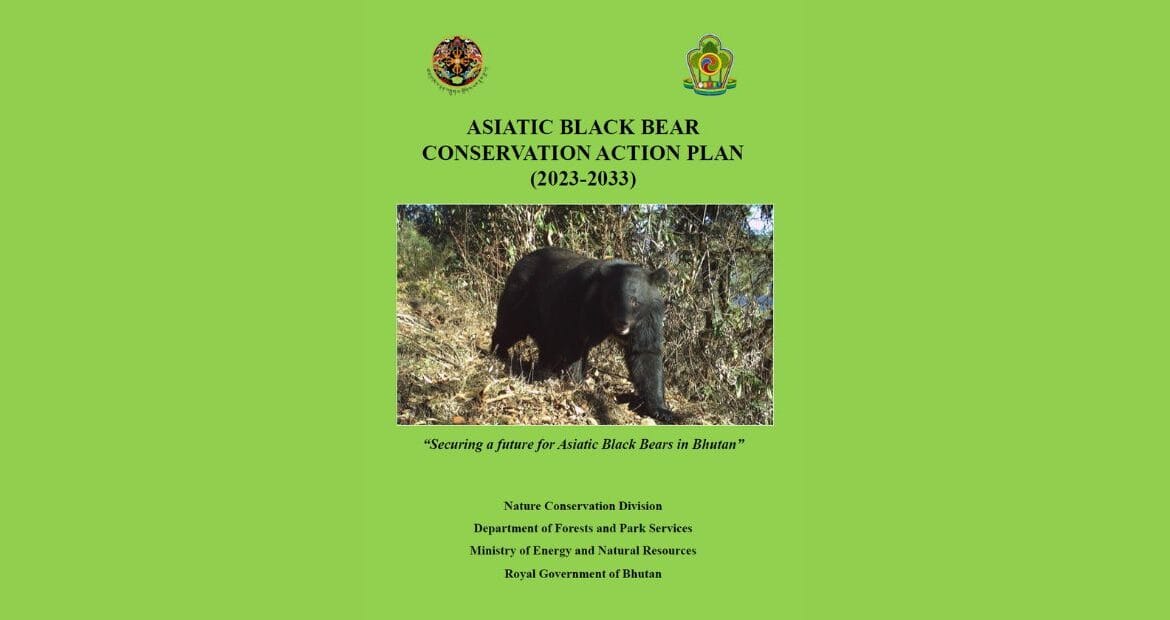The Asiatic black bear Ursus thibetanus is a globally threatened species experiencing a decline in population due to habitat loss and degradation, poaching and illegal wildlife trade, and humanbear conflict. Bears frequently conflict with people as they deprecate crops and livestock and cause damage to life and property. In Bhutan, locally known as “Dom,” bears occur widely and are mostly feared and disliked. People have often expressed the culling of bears to manage
human-bear conflict, some even desiring complete eradication.
Asiatic Black Bear Conservation Plan 2023-2033

